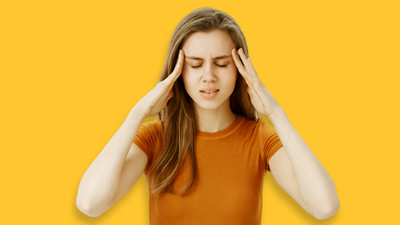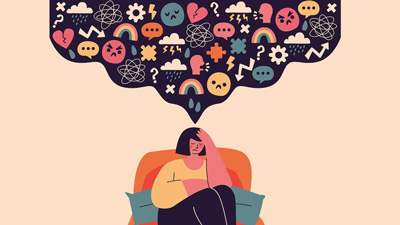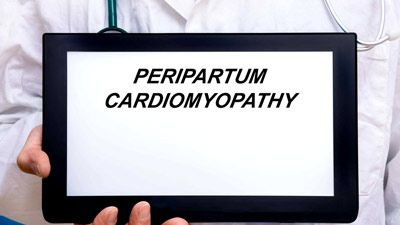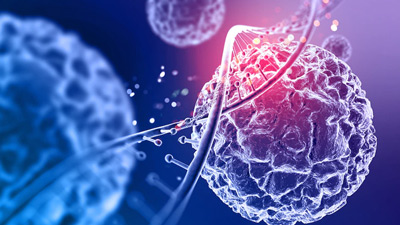Osteoporosis
What is Osteoporosis?
Osteoporosis is a common disease of the bones. It affects millions of people every year. It weakens the bones making them more prone to fractures. It is usually referred to as a silent disease since it doesn’t show any signs or symptoms initially. The condition is diagnosed during a visit to the hospital for a treatment of injuries or fractures in bones. It is such that the patient loses bones without even realizing until a strain, bump or fall causes a bone to break and the doctor diagnoses the condition. The most common fractures include those of the wrist, hip and spine. The condition can cause a great deal of suffering; it reduces the person's ability to move around, especially when the fracture involves the hip.
Symptoms of Osteoporosis
Osteoporosis doesn't cause any symptoms and develops slowly over several years. There are usually no warnings signs. The doctors usually proactively check for the condition in older people with fractures. The condition is confirmed through tests such as x-ray. In older people, a fractured bone caused by osteoporosis can be serious and result in long-term disability. Although there are no specific symptoms, some older people may develop a characteristic stooping caused by fractured spinal bone.
Causes of Osteoporosis
Causes of Osteoporosis include:
Age
Age is the biggest cause of osteoporosis. The body breaks down old bones and replaces them with new ones, but after the age of 30, that changes. The body starts breaking down bones at a much faster rate than it replaces it.
Family History
Heredity is another factor that might up the risk of osteoporosis. A family history of fractures, body build and ethnicity can have a role to play in increasing the risk of osteoporosis.
Menopause
Estrogen, the hormone that helps regulate a woman’s reproductive cycle, is also believed to plays a role in keeping human bones strong and healthy. While women have more estrogen than men before menopause, the estrogen production drops significantly due to menopause, increasing the bone loss and thereby the risk of developing osteoporosis.
Alcohol
Excessive consumption of alcohol can increases the loss of calcium in the body. Especially when you are tipsy, the risk of getting a fracture also increases which can be dangerous for someone with osteoporosis.
Sedentary Lifestyle
People who follow a sedentary lifestyle or have a condition where they can’t move a lot are more at risk of developing osteoporosis. To prevent these diseases from happening, it is important that everyone must exercise and do some kind of physical activity to stay fit and healthy.
Some Medical Conditions
A person can also develop osteoporosis if already suffer from hyperthyroidism.
There are some risk factors that you can control, including:
A broken bone can cause severe pain and disability, which in turn can severely affect your life. Your daily tasks like walking can become harder to do. There are certain controllable triggers that can accelerate bone mass loss and cause osteoporosis.
- Smoking
- Sedentary lifestyle
- Excessive consumption of alcohol
- Weight loss
- Calcium and vitamin D deficiency
- Not eating fruits and vegetables
- Too much sodium, caffeine and protein
- Risk Factors you can’t Control
There are certain risk factors that you can’t change, which include:
- Getting older
- Menopause
- Family history of osteoporosis
- Irregular periods or menopause
- Being too thin
- Rheumatoid arthritis
- Premature menopause
- Anorexia nervosa
- Type 1 diabetes
- Being a female
Prognosis of Osteoporosis
The prognosis for patients with osteoporosis depends on the bone which has been fractured. Also, when the treatment is started as soon as the bone disease is detected the results are better.
Hip fractures can be dangerous for elderly people. Around 20 per cent of the people who experience hip fracture die within one year. Only one-third of hip fracture patients are able to regain their lost function after the fracture.
Treatment of Osteoporosis
Treatment of osteoporosis encompasses medications, dietary changes, exercise regimen and lifestyle modifications. The treatment of osteoporosis may include:
Calcium Intake
People under the age of 50 years require enough calcium each day to maintain bone strength and treat osteoporosis. Consult your healthcare provider for the adjustment in calcium intake as it has to be higher, depending on the degree of boneless.
Get Underlying Conditions Treated
If there is an underlying medical condition that is your osteoporosis, address the problem as soon as possible. If you suffer from hormonal imbalance then you can also opt for hormone replacement therapy which can help you improve bone health.
Monitor your Bone Strength
Careful monitoring of your bone strength and loss can help treat osteoporosis or improve bone strength and health. Monitor it with X-rays, bone mineral density tests, blood tests and other medical tests.
If left untreated or neglected, osteoporosis can lead to broken bones and permanent disability.
Exercise
Exercise, at any age, helps in building and maintaining bone density. Osteoporosis can be prevented by a combination of certain nutrients (calcium and vitamin D) from a well-balanced diet and a regular exercise regime started early in life.
Weight bearing exercises stimulate bone formation and retain calcium in the bones that bear the load. During weight bearing exercises, the force of muscles pulling against bones stimulate the bone building process thus strengthening that bone. It is important to note that bone strengthening is site specific, that is if you weight trains your legs, the bones of the legs only will strengthen and if you load your upper body with weight exercises, you will strengthen the related bones only.
But before you indulge in any kind of exercise, it is important to consult a health care provider to avoid any complications.
Other Preventive measures
- You can reduce the possibility of the disease by making healthy eating choices. Eat a nutritious diet – a diet rich in vitamin D and calcium. You can add green leafy vegetables, dairy products and fish in your diet
- Consume up to 1500 milligrams of calcium is essential for keeping bones strong
- Obesity can also be a reason behind the disease. Keep your weight in check
- Try walking every day for about 30 minutes. It will help boost bone mass
Related Articles
-
Osteoporosis Can Make Your Bones More Prone To Fractures: Here's How You Can Prevent It
When the formation of new bone does not keep up with the loss of old bone, osteoporosis develops. Read on to know about prevention tips.
-
Iron And Ageing: Expert Shares Why Iron Is Essential For Women To Stay Healthy As They Get Older
Iron deficiency holds particular significance as it is commonly observed in older women and can have notable consequences on their overall health.
-
7 Nutritional Tips To Build Stronger Bones In Children
Promoting strong bones in children requires a combination of proper nutrition and regular physical activity. Read ahead to know.
-
Do Not Ignore Lower Back Pain, It Can Be An Indication of These 6 Health Diseases
Lower back pain should not be ignored, as it can be a sign of underlying health conditions beyond muscle strain or poor posture.
-
Loss Of Bone Density Due To Menopause: Is It A Myth or reality
Menopause accelerates bone loss and raises the risk of osteoporosis. Read to know whether it is a myth or reality.
-
Osteoporosis During Pregnancy: Expert Lists Ways To Promote Bone Health
Osteoporosis during pregnancy can cause severe complications like hip, spine, and wrist fractures. Scroll down to learn ways to promote bone health.
-
How To Improve Bone Density And Prevent Osteoporosis After Menopause, Expert Answers
Osteoporosis is a serious condition that causes bones to become weak and brittle, increasing the risk of fractures.
-
Osteoporosis In Women: Rheumatologist Explains Steps To Prevent
In osteoporosis, your bones turn weak and brittle and it is commonly seen in post-menopausal women, leading to fractures even by minor trauma.
-
Juvenile Osteoporosis: Symptoms, Diagnosis and Treatment
Read ahead to know the symptoms, diagnosis, and treatment of juvenile osteoporosis.
-
Food Items You Need To Include In Your Diet For Healthy Bones
Here we have some nutrients and food items rich in those nutrients which are essential for the bone growth and should be a part of your regular diet.















